New Symbiotic System – Revitalization of Tai O is in response to the decline of Tai O’s pillar industry: Agriculture and Aquaculture. It especially focuses on the trend of increasing outflow of younger generation and that wetland value is going to take over Tai O’s cultural value, historical value and spiritual value.
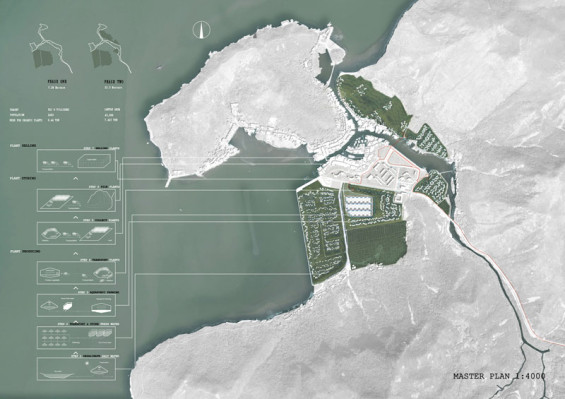
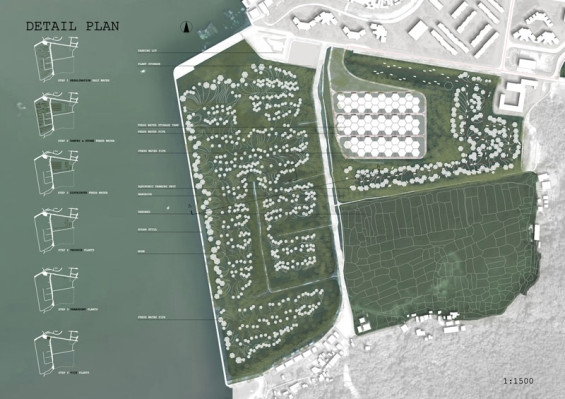
Based on the deserted salt pans that are continuously occupied by mangroves, the project proposes a self-reliance system that allows for vegetable growth and fish cultivation since the system combines desalination and aquaponics farming, which is similar to the self-sustainable survival system of mangroves.
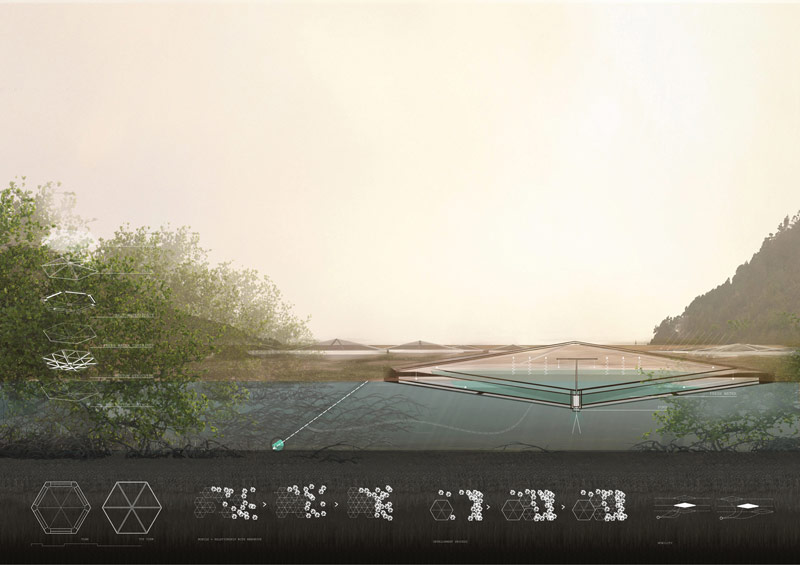
Under this integrated system, fresh water is generated through the desalination of salt water by mobile hexagon solar stills. Then fresh water will flow into the fresh water pipe via hoses and hence be stored in equivalent storage tank. Therefore, it will be pumped out to mobile aquaponics farming units for the aquaculture and hydroponics with wastewater removed to salt pans and purified in reed-fields using filters.
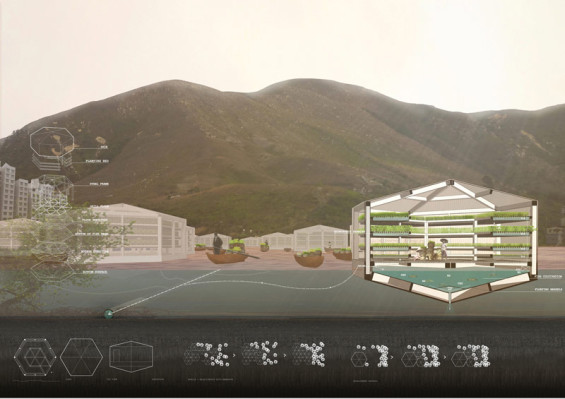
Using mobile cellular structure, solar stills and aquaponic farming structures are therefore consisted of separate units that can be both combined and taken apart freely , tailoring to needs of every family. One can choose the number to assemble depends on their financial condition and disassemble according to their surroundings. In the solar still, salt water will first be evaporated to fresh water vapor which will therefore be condensed and drop to the bottom of the stills. In the end, the fresh water is generated and stored in the water storage tank via a hose and a fresh water pipe. For the aquaponics farming structure, the fish excrement could provide one organic food source for growing plants and plants in return provide a natural filter to purify water so that fishes can live in it.
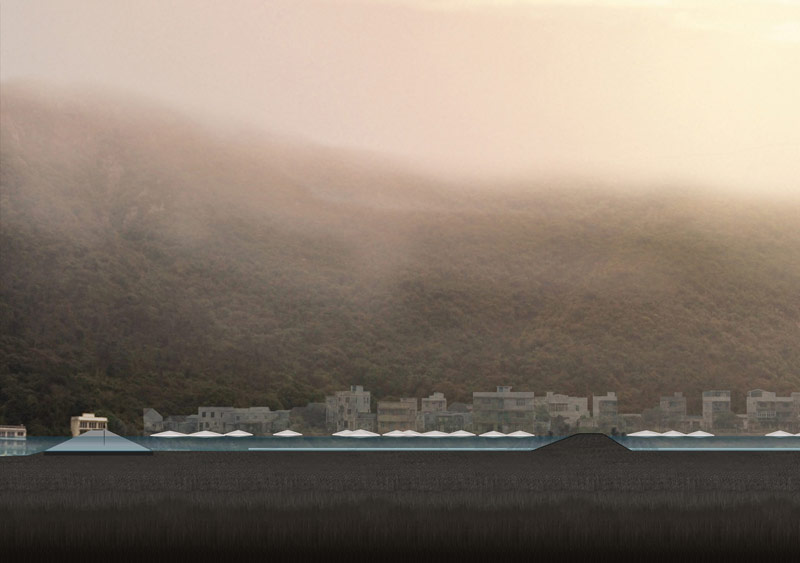
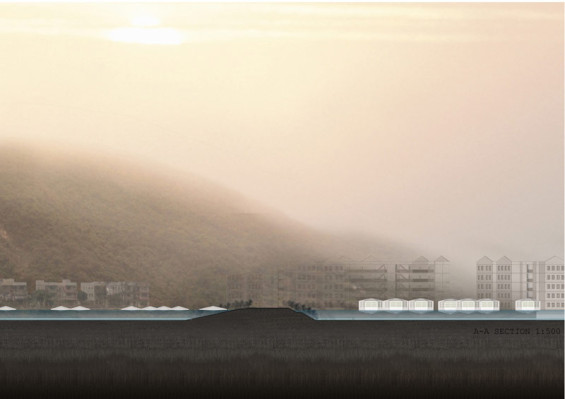
Therefore, this system, on one hand, achieves a win-win relation between wetland development and survival of human beings. On the other hand, it also preserves and inherits the cultures and spiritual values of Tai O.
STUDENT PROJECT | New Symbiotic System – Revitalization of Tai O | Wu Junqing
Student Studio
Shoreline Urbanism at the University of Hong Kong
Masters of Landscape Architecture – Year 1
Location | Tai O Village, Hong Kong
Year | 2012
Image & Text Credits | Wu Junqing

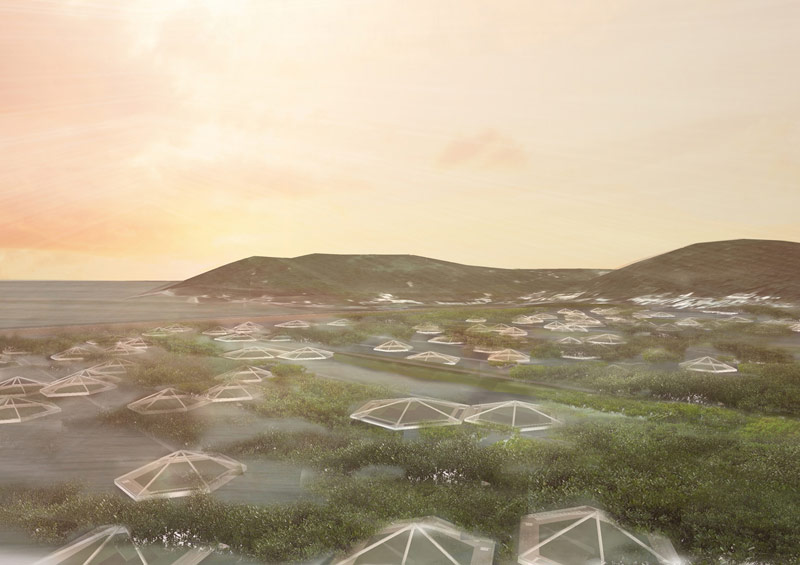
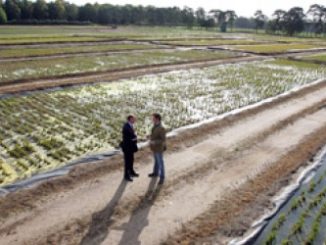
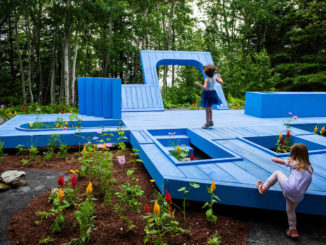
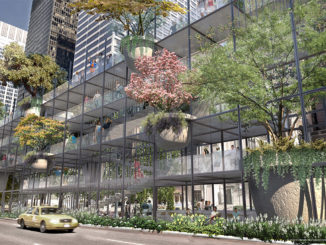
Comments are closed.